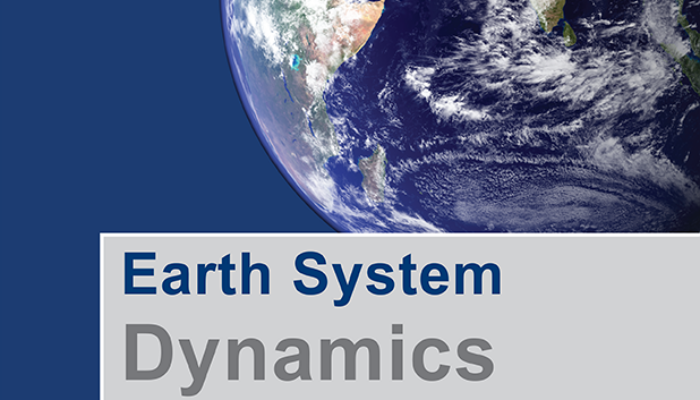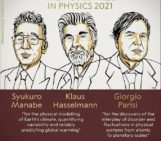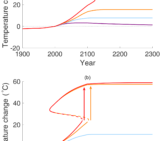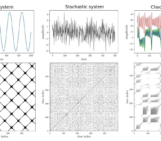
Earth System Dynamics (ESD) is an open-access EGU journal focussing on an interdisciplinary view of the functioning of the Earth system and global change. Due its broad focus, ESD receives submissions of relevance to several different EGU divisions. Here, I would like to highlight five thought-provoking ESD papers that cover topics spanning environmental governance, extreme events, palaeo-climates and ocean and atmospheric dynamics from a nonlinear processes perspective.
Governing change: a dynamical systems approach to understanding the stability of environmental governance Molla et al.
We live on a rapidly changing planet, and our decision-making and governance systems need to be able to respond to these changes, yet also ensure some measure of stability. Which characteristics of an environmental governance system affect its stability? And how can we strike a balance between adaptivity and stability in the complex setting of rapid global change? This study answers these and other questions by using an original combination of agent-based and dynamical systems modelling.
A non-stationary extreme-value approach for climate projection ensembles: application to snow loads in the French Alps Le Roux et al.
Nowadays, we have access to a very large number of numerical climate model simulations. These allow us to investigate the mean climate and extremes in both the past and in future scenarios. However, using the wealth of information provided by multiple climate models is far from easy! For example, how can we assign a robust uncertainty range to multi-model estimates of return periods or return levels for extreme events? And how can we do this while also accounting for the non-stationarity of the climate system? This study addresses these challenges using a novel non-stationary extreme-value methodology for use with multi-model ensembles, and demonstrates a practical application to snow loads in the French Alps.
An important part of palaeo-climatology is dedicated to reconstructing and explaining past climate evolution using proxy records. This challenging task may reveal itself even more complex than previously thought. Using dimensional analysis of a dynamical model on orbital timescales, this study argues that different physical processes can produce similar-looking climate events. Such result poses a new dilemma to palaeo-climate studies, but is also of great interest for the study of future climates on orbital timescales. Indeed, it implies that any given future climate scenario may not have a unique cause.
Jarzynski equality and Crooks relation for local models of air-sea interaction Wirth and Lemarie
Understanding the interactions between different components of the Earth system is a complex task, not the least due to the disparate physical processes involved, evolving on a broad range of spatio-temporal scales. This study specifically focusses on air-sea momentum transfer, which plays an important role in shaping the global climate, and shows that it can be understood by leveraging modern concepts of non-equilibrium statistical mechanics. This seemingly theoretical conclusion has a number of practical implications – not the least by opening new avenues for evaluating numerical integrations and parameterizations in models and for computing the likelihood of some rare and extreme events.
Characterisation of Atlantic meridional overturning hysteresis using Langevin dynamics van den Berk et al.
The Atlantic meridional overturning circulation (AMOC) is an ocean circulation that has a substantial influence on European climate. It has also been identified as one of Earth’s “tipping elements”, with the possibility of a future rapid weakening due to freshwater input from the melting cryosphere, and a bistable behaviour. Leveraging Langevin dynamics, this study compares AMOC collapse in different numerical climate models. It finds that differences between the models are mainly due to the modelled strength of a stable AMOC and the modelled strength of the AMOC response to freshwater forcing.
References
Molla, N., DeIonno, J., Gross, T., & Herman, J. (2022). Governing change: a dynamical systems approach to understanding the stability of environmental governance. Earth System Dynamics, 13(4), 1677-1688. https://doi.org/10.5194/esd-13-1677-2022
Le Roux, E., Evin, G., Eckert, N., Blanchet, J., & Morin, S. (2021). A non-stationary extreme value approach for climate projection ensembles: application to snow loads in the French Alps. Earth System Dynamics Discussions, 2021, 1-22. https://doi.org/10.5194/esd-13-1059-2022
Verbitsky, M. Y. (2022). Inarticulate past: similarity properties of the ice–climate system and their implications for paleo-record attribution. Earth System Dynamics, 13(2), 879-884. https://doi.org/10.5194/esd-13-879-2022
Wirth, A., & Lemarié, F. (2021). Jarzynski equality and Crooks relation for local models of air–sea interaction. Earth System Dynamics, 12(2), 689-708. https://doi.org/10.5194/esd-12-689-2021
van den Berk, J., Drijfhout, S., & Hazeleger, W. (2021). Characterisation of Atlantic meridional overturning hysteresis using Langevin dynamics. Earth System Dynamics, 12(1), 69-81. https://doi.org/10.5194/esd-12-69-2021




